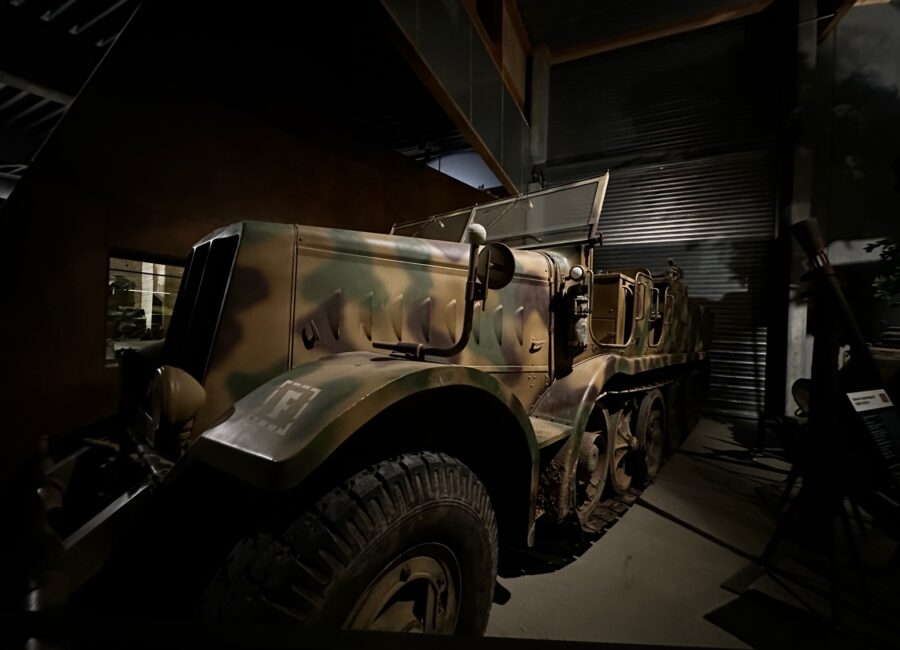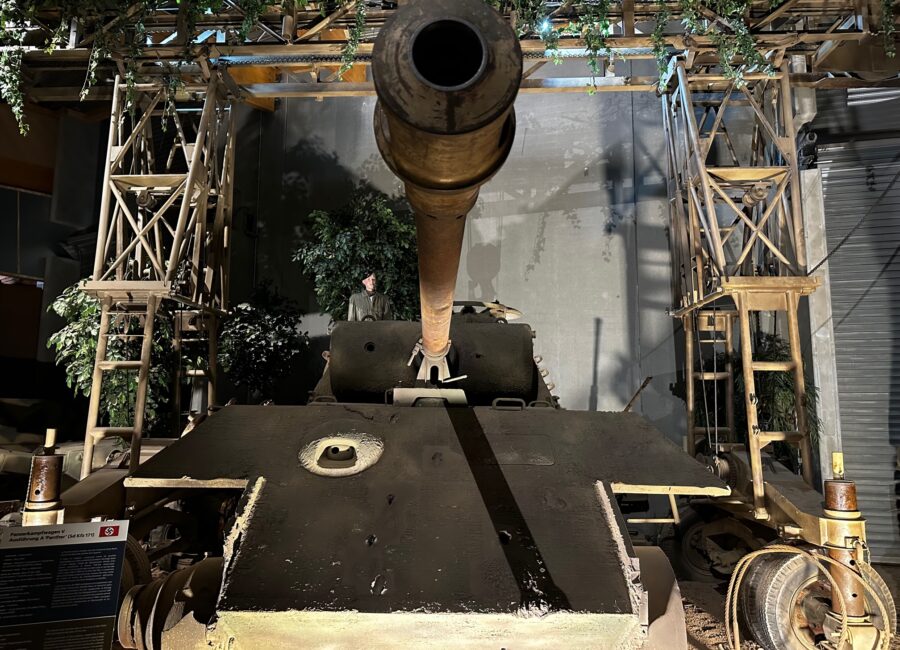
The Schwerer Zugkraftwagen 18 ‘FAMO’ (Sd Kfz 9), more commonly known as ‘Famo’, is one of the most beautiful pieces of the Leloup collection. Built in November 1943, this half-track is the largest artillery tractor ever built by the German army. It was notably used in Normandy for the installation of coastal batteries and for the repair of Panzer units. By the way, if it takes only one Famo to tow a Panzer IV, it takes 2 to tow a Panther and 3 for a Tiger I and II!
The Famo from the Leloup collection was recovered in l’Aigle in the Orne department. In very bad condition, it had been stored by a public works company in order to be transformed into a bulldozer. Restored since 2006, this piece will have required no less than 10,000 hours of work spread over 7 years!
Out of 2,500 Famos manufactured during the Second World War, only 12 still exist in the world today.

The grapple on display in our Museum since 2019 is an extraordinary D-Day relic.
On June 6, 1944, hundreds of thousands of men set out for the Normandy beaches of Utah, Omaha, Gold, Juno and Sword Beach to end Nazi domination of Europe. The two beaches in the American sector, Utah and Omaha Beach, were made vulnerable by the Pointe du Hoc coastal battery located on a 30-meter-high cliff. To disable this stronghold, the Allies came up with a remarkable plan.
That same day, at 7 a.m., 225 Rangers, under the command of Colonel Rudder, stormed the cliff with ladders and grapples. An exploit still praised to this day !
A few days after the assault, Jean Beck, a young man of 18 at the time, went to the site of the assault with his father to check the land requisitioned by the Germans and found a grapple stuck in brambles. He decided to take it home and kept it for decades before selling it in 1991 to a private collector.
This grapple is, today, the only one found in such a state of preservation. Six other specimens were found over time during fishing expeditions but all were incomplete and loaded with concretions.
Now an integral part of the exhibition, the Pointe du Hoc grapple is visible to all.

The Panzerkampfwagen V Ausführung A (Sd Kfz 171), known as the “Panther”, is another of the major exhibits in the Museum. Very rare nowadays, this tank with multiple variations, only had 6,000 copies built by the Third Reich. Particularly solid, it is one of the best German tanks ever designed. More than 650 Panthers took part in the Battle of Normandy and almost none of them crossed the Seine during the flight of the German 7th Army.
The Panther model on display in the Museum left the Daimler-Benz factory in March 1944. It participated in the Battle of Normandy. Seized in Rânes, a small town located between Alençon and Falaise, this tank was repaired and put back into service by the French Resistance in order to take part in the fighting against the Germans.